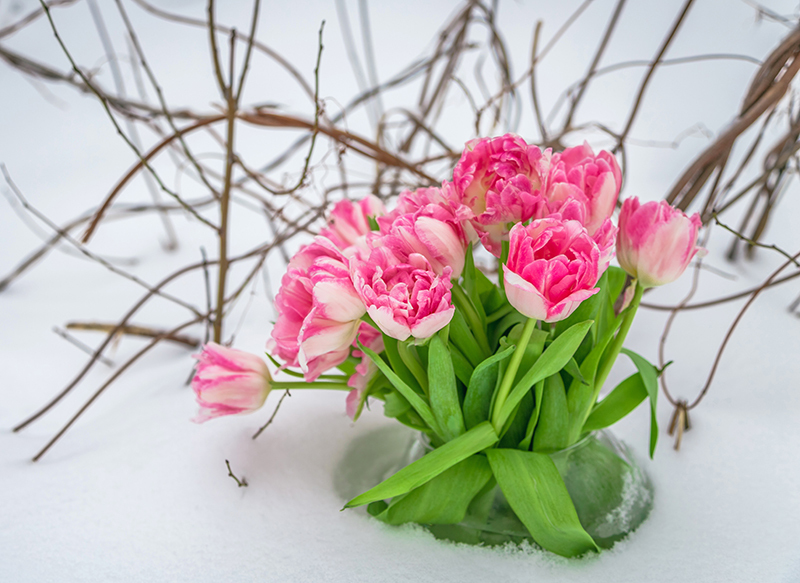Learn to Help Your Poinsettias Blossom Well into the New Year
Posted on 03/07/2025
Learn to Help Your Poinsettias Blossom Well into the New Year
Poinsettias are beloved holiday plants bringing rich red, creamy white, and vivid pink hues to homes each winter. Too often, though, these festive blooms fade quickly, wilting and dropping leaves as the calendar turns. If you want to enjoy beautiful poinsettia blooms long after December and even into spring, you'll need to give them the right care and attention. This in-depth guide will teach you how to help your poinsettias thrive and blossom well into the New Year, transforming them from temporary decorations into vibrant, lasting houseplants.

Understanding the Poinsettia: The Basics You Need to Know
Before we dive into expert care techniques, it's important to understand what makes the poinsettia unique:
- Poinsettias (Euphorbia pulcherrima) are native to Mexico and Central America.
- The showy red, white, or pink parts are not actually flowers, but are colorful bracts (modified leaves). The real flowers are tiny and clustered in the center.
- Poinsettias come in many varieties, and can be grown as perennials in warm climates.
- While commonly enjoyed as Christmas plants, they're capable of blossoming well beyond the holidays with the right environment.
Top Reasons Poinsettias Fail to Thrive Past the Holidays
First, let's look at why poinsettias often struggle after Christmas:
- Incorrect watering--too much or too little quickly harms the plant.
- Lack of proper light--poinsettias need bright, indirect light to maintain their color and health.
- Exposure to temperature extremes--cold drafts or hot, dry air can shock the plant.
- No humidity--dry winter air indoors weakens poinsettias fast.
- Neglect--after the holidays, many people forget to care for them, leading to leaf drop and decline.
With these pitfalls in mind, let's explore how to keep your poinsettias blossoming into the New Year and beyond.
Poinsettia Care: How to Make Poinsettias Last Past Christmas
1. Choose a Healthy Plant to Start
Selecting the right poinsettia is the foundation for long-term success. Here's what to look for when purchasing:
- Vivid, evenly colored bracts with no spots or discoloration.
- Lots of healthy, full green leaves beneath the colored bracts.
- Tightly clustered yellow-green true flowers at the center--not dusty or dropping off.
- An overall robust and upright appearance, with no drooping stems.
2. Provide the Perfect Light Conditions
Poinsettias prefer bright, indirect sunlight. A spot near a sunny, east- or west-facing window is ideal. If you notice leaf color fading or bracts losing vibrancy, consider increasing light exposure.
- Try to give your poinsettia plants at least 6 hours of light daily.
- Avoid harsh midday sun, as it can scorch the bracts and leaves.
3. Manage Temperature and Humidity Carefully
Consistent temperature and humidity keep poinsettias thriving:
- Maintain indoor temperatures between 65 - 75?F (18 - 24?C) during the day and not below 60?F (15?C) at night.
- Keep your plant away from drafts, radiators, and heat vents, which can dry it out or cause leaf loss.
- Add humidity by placing the pot on a tray of pebbles and water, or using a room humidifier--especially important during dry winter months.
4. Master Watering Techniques for Extended Blooms
Proper watering is vital for long-lasting poinsettias:
- Check soil moisture regularly--water only when the top inch of soil feels dry to the touch.
- Use room temperature water.
- Ensure the pot has good drainage; never let the plant sit in standing water.
- Avoid letting the soil completely dry out, which causes leaves to wilt and drop.
5. Fertilize for a Robust Recovery After the Holidays
Feeding your poinsettia after holiday blooms helps maintain its health:
- Begin fertilizing only after the bracts start to fade (late winter or early spring).
- Apply a balanced, all-purpose houseplant fertilizer every 2-4 weeks according to label instructions.
Post-Holiday Poinsettia Care: Keeping Plants Alive and Preparing for Re-bloom
1. Prune to Encourage Healthy Growth
As the vibrant bracts fade, typically in late January or February, prune back the main stems to about 4-6 inches tall. This encourages new, strong growth and helps your poinsettia maintain a compact, attractive shape.
2. Repot If Necessary
If your poinsettia has outgrown its pot or roots are circling the container, gently repot it in spring:
- Choose a container 1-2 inches larger in diameter with good drainage holes.
- Use a well-draining potting mix suitable for houseplants.
3. Move Poinsettias Outdoors (If Climate Permits)
After the danger of frost has passed, you can move your plant outside to a partially shaded area:
- Gradually acclimate it to stronger light by placing it in morning sun with afternoon shade.
- Keep soil moist but not soggy, and watch for sudden temperature changes.
4. Promote Bushy Plants with Regular Pinching
To encourage a fuller appearance, pinch back new growth in late spring and early summer:
- Remove the tips of each stem above the second or third leaf cluster.
- This helps produce multiple branches and more bracts for next season's blooms.
How to Encourage Poinsettia Re-bloom for Next Christmas
If you've cultivated your plant all year, you may want to get it to re-bloom for the holiday season. This requires a process called photoperiodic control, or manipulating the amount of light the plant receives each day.
Poinsettia Blooming Cycle Step-by-Step:
- September-October: Bring the plant indoors before night temperatures drop below 55?F (13?C).
- October-November: Provide 14-16 hours of total darkness each night (for about 8-10 weeks) by covering the plant with a box or black plastic bag, or placing it in a dark closet from 5 pm to 8 am daily. During the day, give it bright, indirect sunlight.
- December: When you see colorful bracts forming, return to normal care--your poinsettia is preparing to bloom again for the holiday season!
This routine can be repeated each year, allowing you to enjoy homemade poinsettia blooms each Christmas and well into the New Year.
Common Poinsettia Problems and How to Solve Them
Leaf Drop
Generally caused by temperature fluctuations, drafts, or excessively wet/dry soil. Ensure stable indoor conditions and proper watering routines.
Wilting or Yellowing Leaves
Can indicate underwatering, overwatering, or root rot. Check soil moisture and always empty excess water from saucers.
Pale or Faded Bracts
Lack of sunlight is usually the culprit. Move your plant to a spot with more indirect light.
Pest Issues
Watch for whiteflies, aphids, or spider mites. Treat promptly with insecticidal soap or neem oil if needed.
Stunted Growth or No Blooms
This is often due to a lack of darkness during the fall photoperiodic treatment, or inadequate fertilizer during the growing season.
Are Poinsettias Poisonous?
Contrary to popular belief, poinsettias are not highly toxic to humans or pets. However, ingesting the leaves or sap can cause mild stomach upset or skin irritation for some people and animals, so it's still wise to keep them out of reach and handle with care.
Creative Ways to Display Your Long-lasting Poinsettia Blooms
- Group multiple poinsettias in varying bract colors for a stunning winter centerpiece.
- Combine poinsettias with evergreen boughs, pine cones, and candles for festive decor.
- Use miniature poinsettia plants to accent mantels, tabletops, or holiday tablescapes.
- After the holidays, accent your plant with fresh spring decorations, or incorporate them into year-round indoor gardens.

Frequently Asked Questions about Poinsettia Care
How can I revive a droopy poinsettia?
Quickly water the plant thoroughly (if the soil is dry), and move it to a warmer, brighter location. Trim away any yellow or damaged leaves.
Can poinsettias be kept from one year to the next?
Absolutely! With the comprehensive poinsettia care tips above, you can enjoy repeat blooms year after year.
When should I prune my poinsettia?
Prune in late winter or early spring, once the holiday bracts start fading and new growth appears.
What is the right soil for poinsettias?
Choose a rich, well-draining potting mix--ideally with some peat moss or compost included.
How do I get my poinsettia to bloom again next year?
Follow the photoperiodic darkness treatment beginning in autumn, as outlined above.
Conclusion: Enjoy Lush, Blossoming Poinsettias Well Into the New Year
With a bit of knowledge and attentive care, it's entirely possible to help your poinsettia blossom long past the holiday season. From perfect watering routines to proper pruning and a little light management, these resilient plants can become star attractions all year. Give your poinsettia the right conditions, and you'll be rewarded with vibrant blooms and healthy green foliage deep into the New Year--and possibly for many more to come. Follow this guide, and let your home be graced with color and cheer from your poinsettias throughout every season!
Latest Posts
The 5 Classic Flowers to Gift for an Enchanting Valentine's Day
Learn to Help Your Poinsettias Blossom Well into the New Year
Orchid Care Simplified: Easy Guide to Success
What Insights Does Your Birth Flower Offer About Your Nature?





